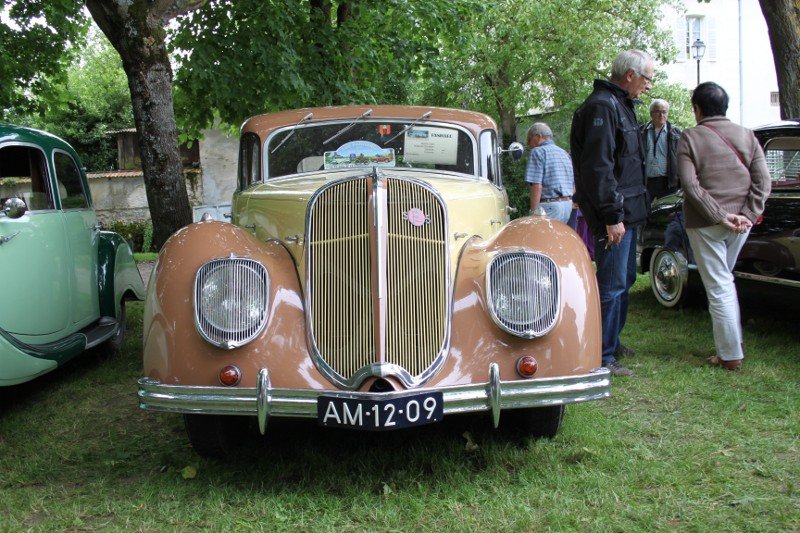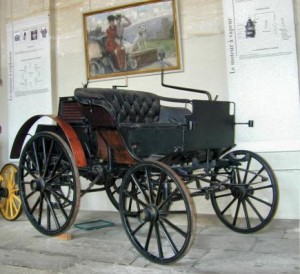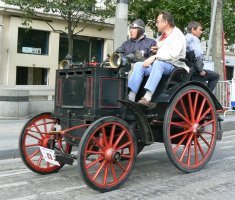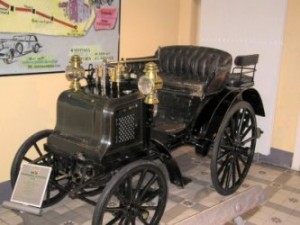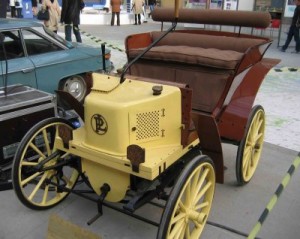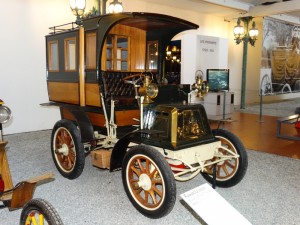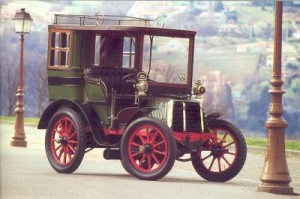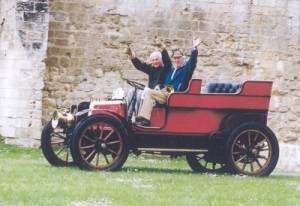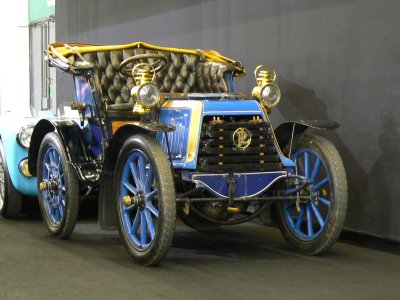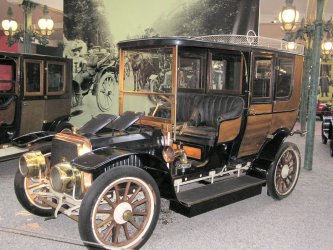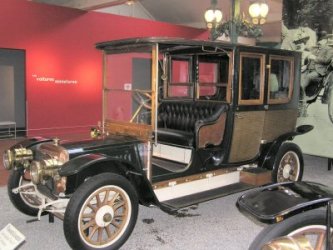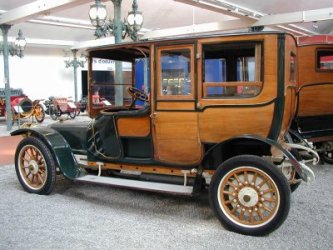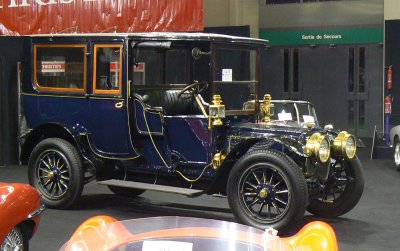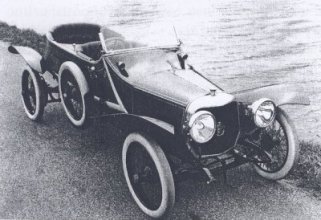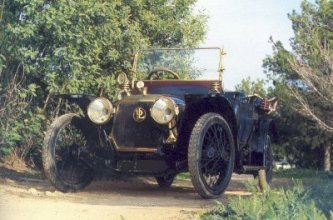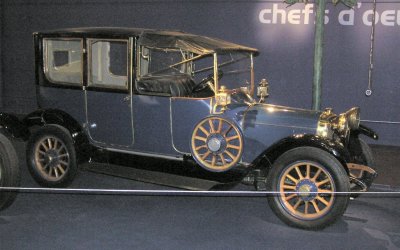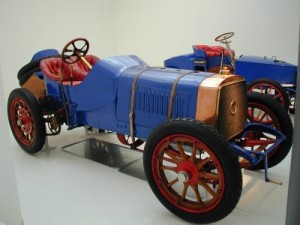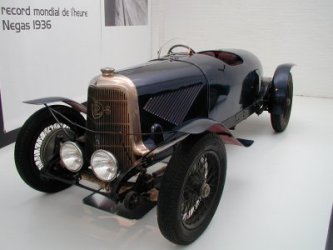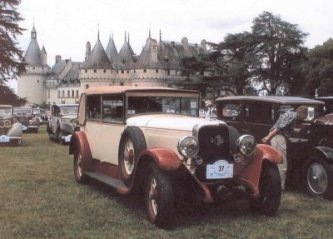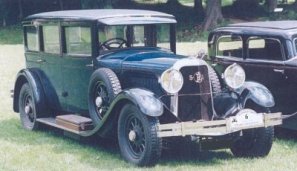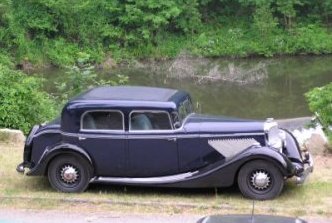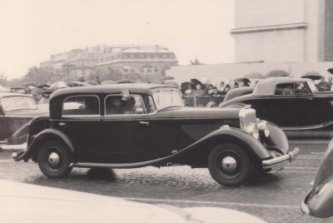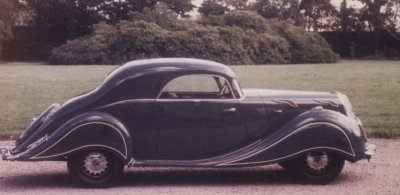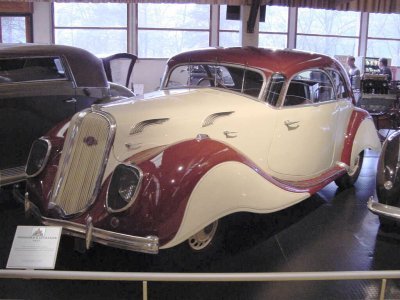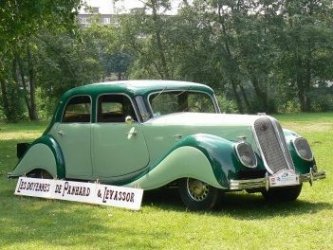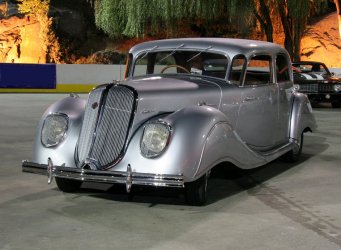Today ?
Our deans are now venerable old ladies. This does not mean that an automobile, whatever its age, is made to roll, not to remain enclosed in a cocoon.
Here is a small chronological outline of Doyennes seen here and there. Some belong to members of the club, others are visible in museums …
Let’s start with the formidable museum of Compiègne which is full of a foultitudes of very old wonders … a treat. There are two of the oldest Panhard & amp; Levassor on the left, the second prototype of 1891. On the right, a two-seater phaeton from 1891, representing the first series of thirty cars built in the world, five of them in 1891. The basic principles that will be retained later Are already there: engine at the front, transmission to the rear wheels.
Today the oldest automobile in the state to roll dates from 1892 and it is a Panhard & amp; Levassor of course!
It still belongs to the Panhard family. Hippolyte Panhard received it as a birthday present and will carry on board the first automobile tour in history: Paris-Nice in March-April 1893.
In July 2007, this car took part in the retrospective of the Paris-Bordeaux-Paris race of 1895, traversing without major breakdown the 600 kilometers linking Bordeaux to Paris …
The museums of Mulhouse and Rochetaillée also present beautiful old pieces. On the left is a 1894 V2 Daimler car in Mulhouse. On the right, a stationary Penix 2 cylinder of 1896, visible in Rochetaillée.

As we saw earlier, the Panhard family has retained a number of treasures, including a single prototype single-cylinder engine from 1897. This car was nicknamed the “Garden Car”. It is loaned to the Automobile Club de France.
Whatever his age, a car is made to ride. Some of our members do not deprive themselves! Here is Théo in his wonderful 4-cylinder Phenix motorcar from 1898. He also participated in the Bordeaux-Paris retrospective of 1895 in July 2007.
Return to Mulhouse with this landaulet type A1, with 2-cylinder Phenix engine of 1898, body-work with Binder on the left and this other landaulet type A2, with 2-cylinder engine Phenix of 1900. In less than ten years the tires became generalized.
For good looks, here in Rochetaillée a barrel barrel type B1, with 4-cylinder Phenix engine of 1900, coated with Driguet ein in Paris.
The Panhard & Levassor are present all around the world. Here is the Phaeton B1 / B2, with Phenix 4-cylinder engine of 1901 Toyota Museum, Japan.
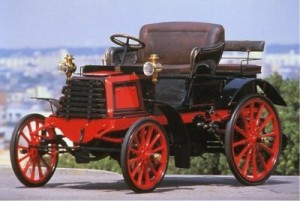
Here is John in his type B1 / B2, with engine 4 cylinders Phenix of 1901. Another car that rolls …
It will be noted that after the generalization of the tires, the wheel diameter has evolved: the wheels are now substantially of the same dimensions at the front and at the rear.
A pretty A2 from 1902 was recently sold at the Rétromobile 2007 show. Before the death of his previous owner, this car was known to drive a lot.
Return to the museum of Mulhouse with some wonders. Here are first two drivers’ coupes: a large 24CV type U1 of 1906 coated by Kellner, followed by an 18CV type X8 of 1911 coated at J. Rothschild & Fils, Rheims and Auscher in Paris.
We then find a pretty sedan with 3 doors 12CV type X5 (first unit motor) of 1911 and a coupé driver 18CV X12 of 1912.
A beautiful limousine 35CV type Y of 1911 body with J. Rothschild & amp; Fils, Rheims and Auscher in Paris, which was auctioned off at Rétromobile in 2007.
The 10CV X19 was an important step for Panhard & amp; Levassor. The great coachbuilder Labourdette gave birth in 1912 to a splendid mahogany skiff roadster that no longer exists but a replica (left) is visible at the Nationaal Automobiel Museum in the Netherlands, which gathers the Louwman collection. On the right, a classic 1919 X19 roadster.
Besides these “popular” cars, Panhard & amp; Levassor is proud of its enviable reputation with its luxury cars, such as this very nice 19CV X26 type driver coupe, visible in Mulhouse. This is the beginning of the supremacy of the engine without a valve.
Competition has always been an important part of Panhard & amp; Levassor. The museum of Mulhouse presents some treasures.
Here is one of the cars of the grand prix of ACF 1908: 120CV, 12,8 liters! It was during this race and in this car that the pilot Cissac and his mechanic were killed after a pneumatic burst.
Later the brand will abandon the race, too deadly, to devote itself to records … Here is the 35CV 8 cylinders of records of 1926 and the 20CV Sport of 1932, still in Mulhouse.
 https://doyennes-panhard-levassor.fr/aujourdhui/
https://doyennes-panhard-levassor.fr/aujourdhui/
In tourism, the 1920s marked the total abandonment of the valve engines and the rise of the brand’s cars with the gradual abandonment of the smallest models. Here is the enormous 35CV convertible sedan type X42 with 8-cylinder engine 1925, coated by Manessius, by Bruno.
The “small” 9 / 10CV still continue to be produced, such as Roger Roadster X47 1926 or Frans Landaulet Weymann X47 1928.
At the end of the 20s the fashion of the 6 cylinders made its way. Here is the coupe driver 13CV type X63 1929 personnel of the famous bodybuilder Henri Labourdette and the big sedan 16CV type X57 1928 of Francis.
From 1930 the “S” series (6CS, 6DS and 8DS) marks a rationalization of production with fewer models. At the same time, the rise in the range continues since there are only powerful 6 or 8 cylinders. Here is a very nice 6D X66 20CV type 1930, with its characteristic and elegant bodywork lowered, due to the house designer, Louis Bionnier and a sumptuous 8DS type X67 29CV 8 cylinders of 1931 carved in sedan discoverable by Janssen.
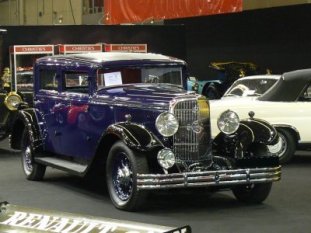
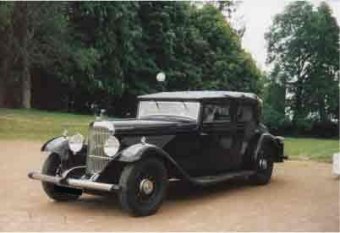
Factory bodies become the standard with a wide choice offered to the customer. Here is the sober sedan 6CS X72 14CV 1933 of André and the very nice coupe 6DS X71 23CV 1933 (re-equipped in X74 27CV by the factory in 1934) Lane Motor Museum of Nashville, USA.
In 1934, Panhard & amp; Levassor presents the Panoramique, a new concept of bodywork with integral visibility. Here are the sedans 6CS X72 14CV 1935 of Denis and Monique and 6CS Special X73 16CV 1936 of Matthieu and Marie-Claude.
In 1936, it was the shock: the very conservative brand dean presented the (too?) Revolutionary Dynamic … in the face of the Popular Front!
For a bourgeois clientele, anxious for discretion, it is really not the time to display with a car so flashy and exuberant … The Dynamic will be a commercial failure. Here is the beautiful and very rare coupe X76 14CV 1936 of Etienne and Marie-Andrée.
This body will soon be replaced by an equally surprising coach, here coach X76 14CV 1937 of the museum Rochetaillée.
In addition to the coupe (available on two wheelbases) and the coach, the Dynamic range includes a limousine and a convertible (available in two successive variants). Existing limousines are counted on the fingers with one hand and there seems no longer any cabriolet.
Most of the Dynamics have come out as coaches and especially in sedans. Here is the sedan X77 16CV 1938 of Alain, well known in the United States, and the sedan “Parisienne” X81 16CV 1939 of Arnaud.
If you also want to see your Dean on our site or if you know one,contactez nous
